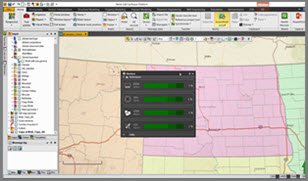Petrel new features
Petrel subsurface software latest features
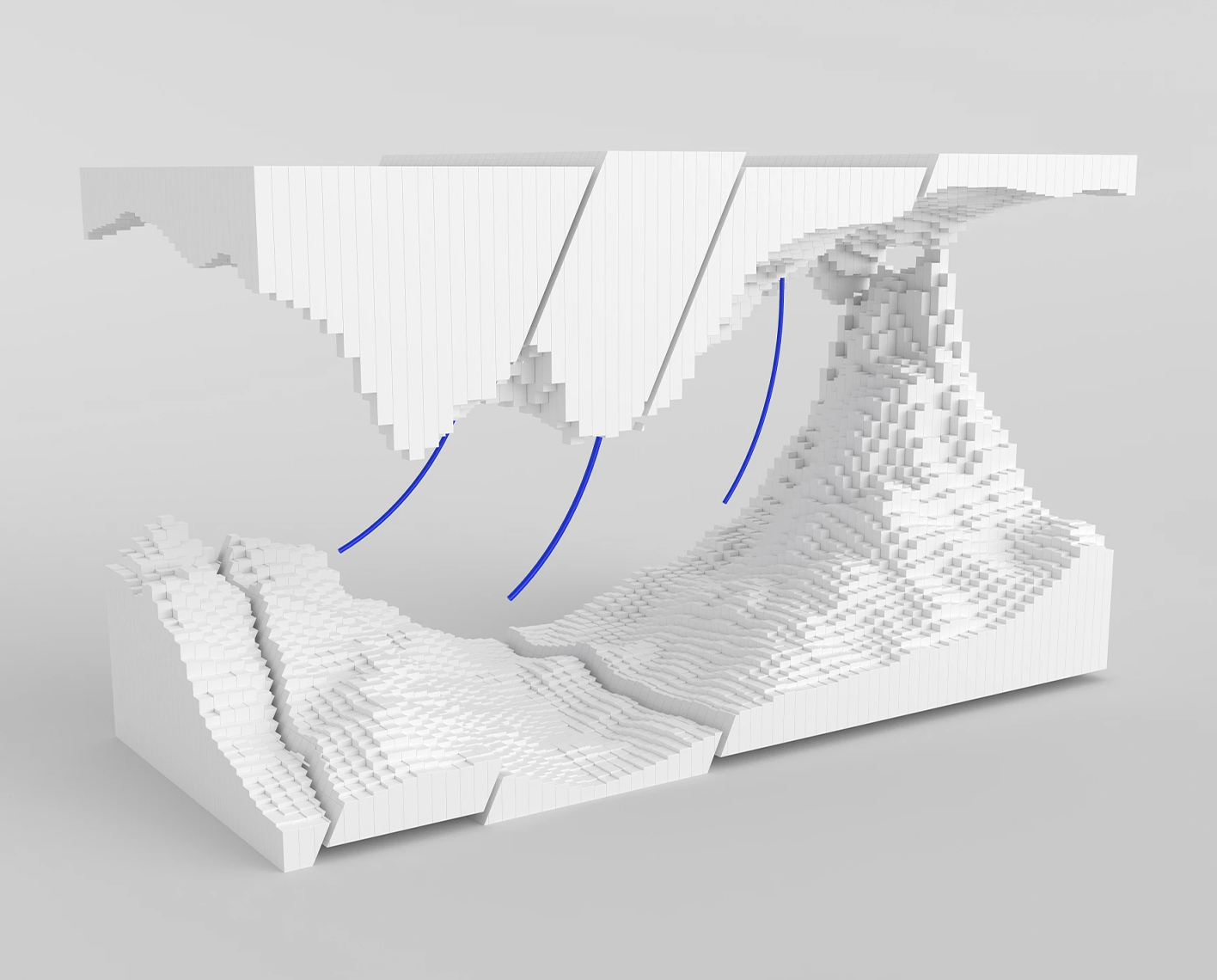
Petrel Subsurface Software Machine-learning (ML) Raster Digitization
Petrel ML Raster Digitization leverages a pre-trained machine learning algorithm to efficiently convert well log curves locked in raster images into a digital format. This tool streamlines the traditionally manual, time-consuming, and costly process by scanning selected sections of raster logs, removing background noise (such as track lines, text, and handwritten notes), isolating the curve of interest, and digitizing it. The resulting digital logs can then be seamlessly integrated into further Petrel software workflows, enabling intuitive and efficient access to valuable data.

Petrel 2024.6 to Petrel 2024.8 Features
Petrel 2024.6 and Studio 2024.8 release announcement
Updates from Petrel 2024.6 to Petrel 2024.8 deliver the latest in domain workflows, functionality, and productivity. In these releases, new functionalities have also been added based on popular feature requests.
Fresh, new Petrel software interface
In 2024.8, we’ve unveiled a modern look, and a cleaner, more streamlined design. The simplified layout makes navigation faster and more intuitive, while consistent visual elements create a cohesive experience across the platform. The result is a more enjoyable, efficient, and professional user experience that reflects the high quality of the tools.
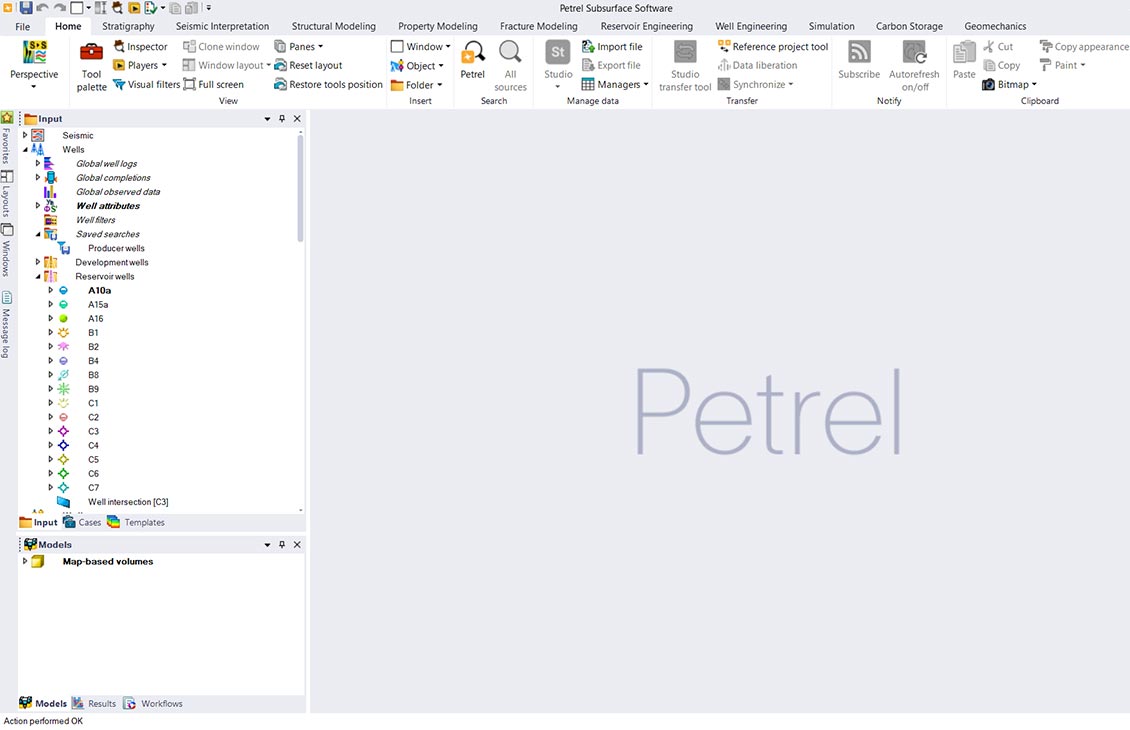
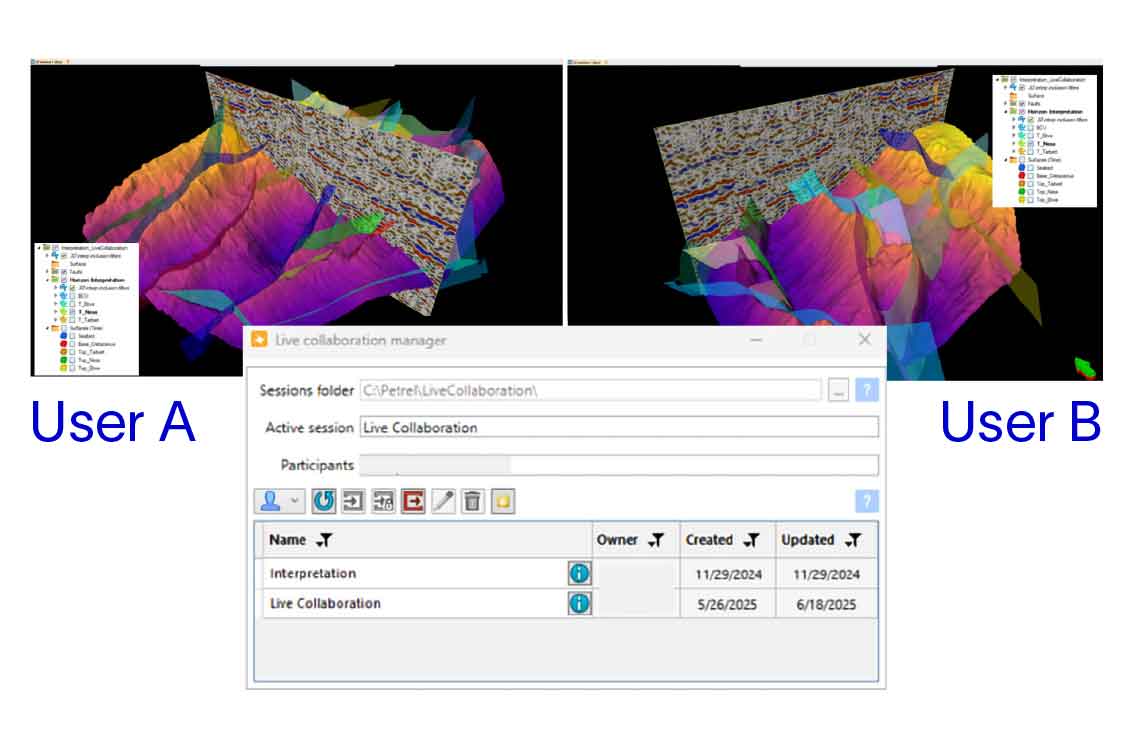
Live collaboration in Petrel software
Live collaboration in Petrel software facilitates efficient, real-time teamwork in geophysical and geological interpretation, making it easier and faster than ever for geoscientists to collaborate, iterate, and deliver high-quality results. Multiple users can work simultaneously and in real time for several geological and geophysical datatypes.
Fluid Migration Analysis
Revolutionize your fluid migration workflows with this innovative tool that simplifies and accelerates analysis directly on seismic volumes. Effortlessly map migration pathways, evaluate CO₂ storage potential, and integrate ML-driven fault cubes for enhanced insights—all with high performance and scalability. Transform seismic data into actionable decisions faster than ever.
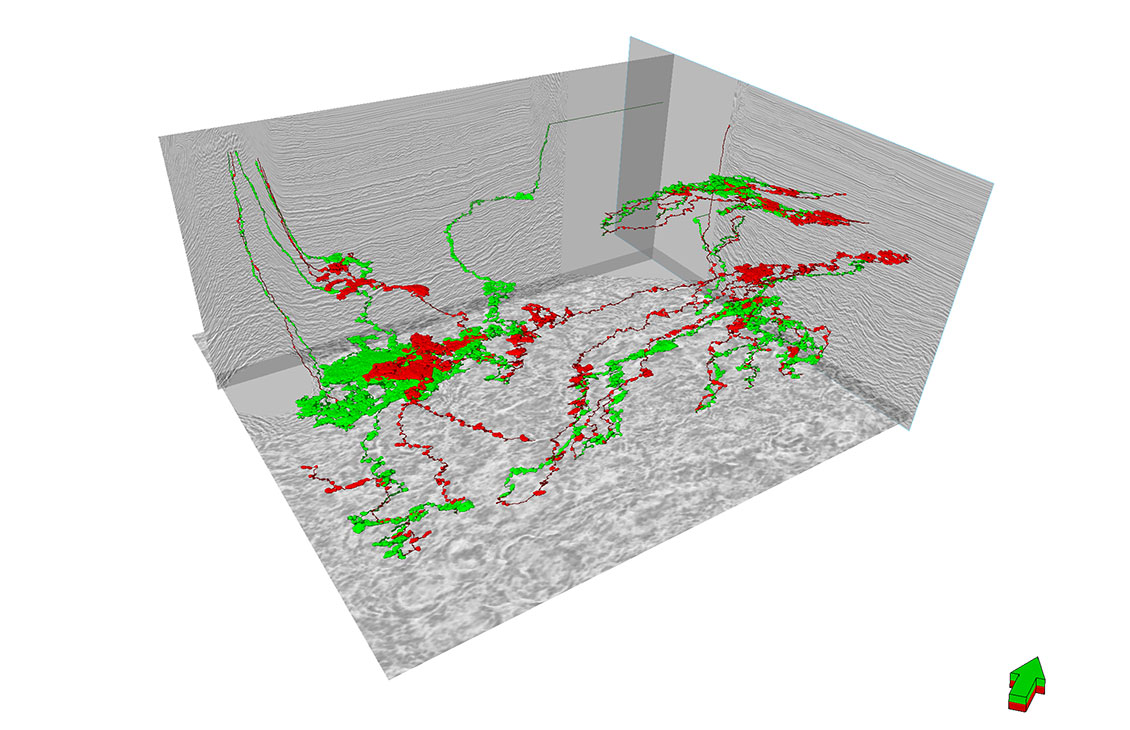
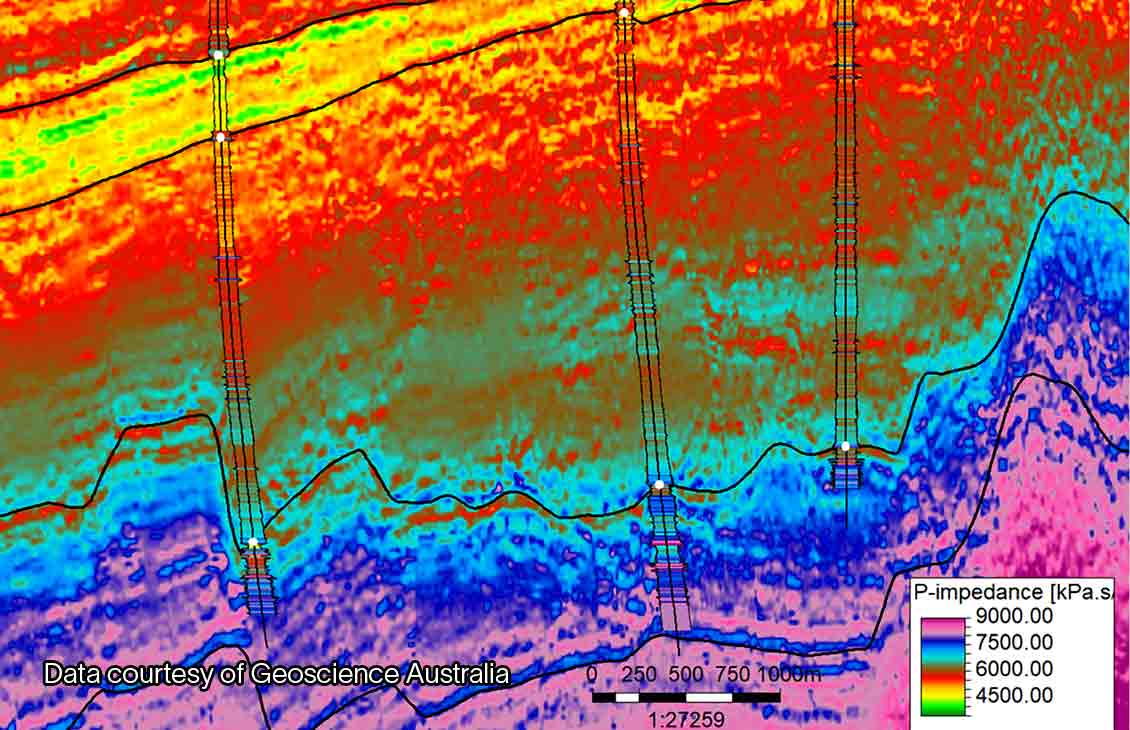
Reservoir characterization background model in QI workflows
QI results are relative in nature, as the input seismic is missing the low frequencies. A user-defined background model can now be added to the results to generate an absolute attribute. The background model must be of the same template as the target attribute. You can predict absolute properties to get better insights into subsurface changes.
Conventional model builder plug-in now available!
Conventional model builder (CMB) is a new addition to the reservoir engineering (RE) extension suite of plug-ins. The CMB plug-in is designed to streamline the generation of simulation models for conventional reservoirs.
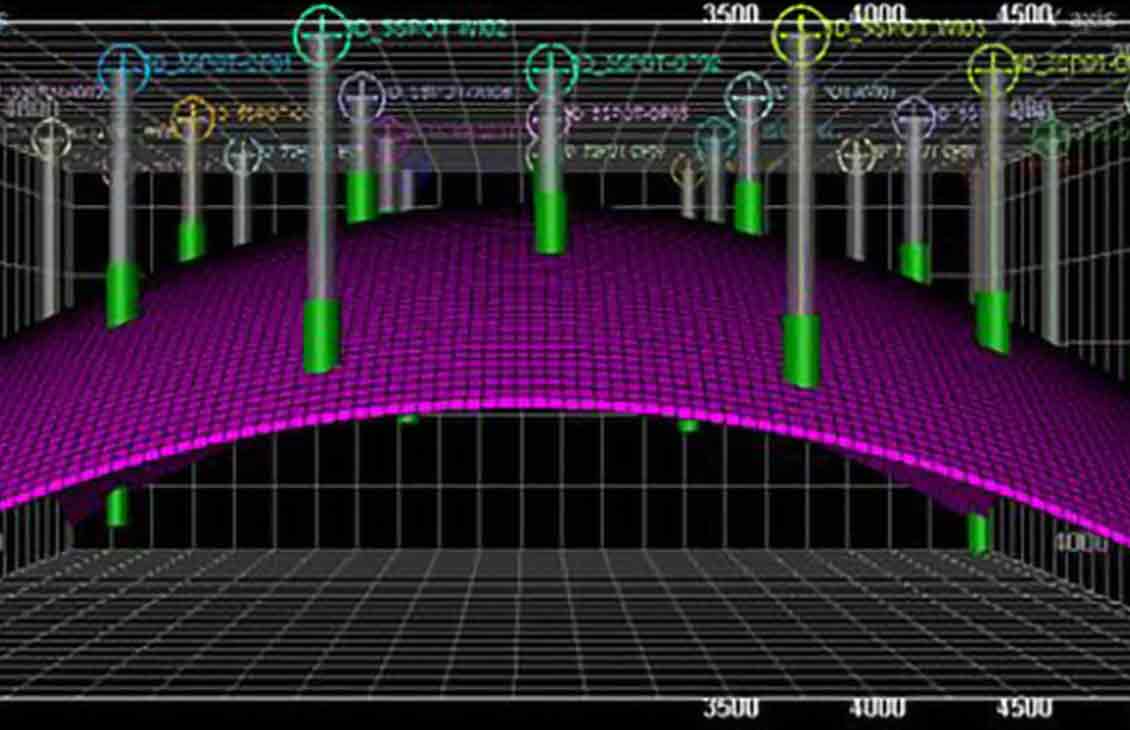
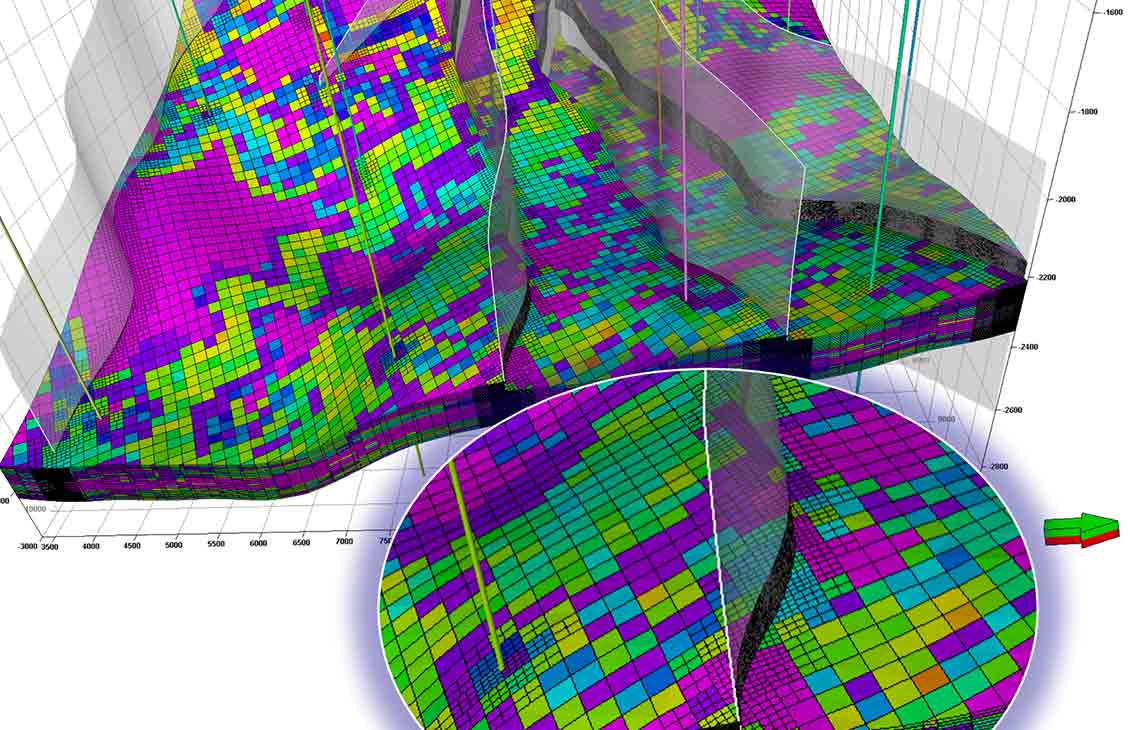
Local grid refinements (LGRs) for depogrids
LGRs enable users to increase model resolution near wells, around surfaces, near faults or inside a region of interest. The subdivision of depogrid cells to create LGRs is consistent with the original creation of the depogrid in the unfaulted depositional space, using the (U, V, W) coordinates. LGRs can be consumed in the Intersect simulator to improve flow simulation accuracy in the associated areas.
Enhanced window loading efficiency for faster project load times
We've made significant improvements to how windows are loaded to enhance overall performance. Previously, all toggled windows were loaded when the project opened, even if they were hidden behind other windows. This could slow down project loading times. Now, only the visible windows at the front of each window group are loaded initially. The other windows load only when they are activated (i.e. they become the front of the window group) for the first time.
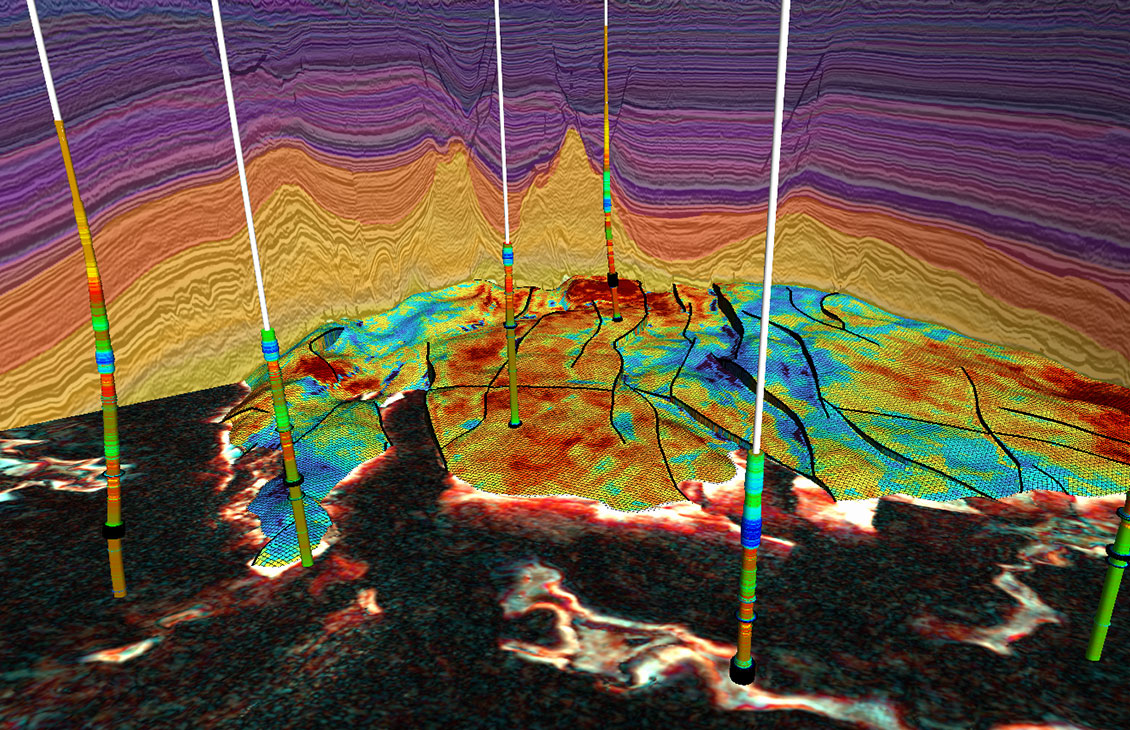
Petrel 2024.2 to Petrel 2024.5 Features
Geologically consistent horizons with machine learning for multi-horizon prediction
Multi-horizon prediction uses machine learning to predict geologically consistent sequences and can be used to predict horizons with non-consistent reflectors, truncations, salt bodies, channels, unconformities etc. The predicted horizons can be seamlessly extracted and interactively filtered to create clean and precise interpretation to rapidly build an accurate structural model.
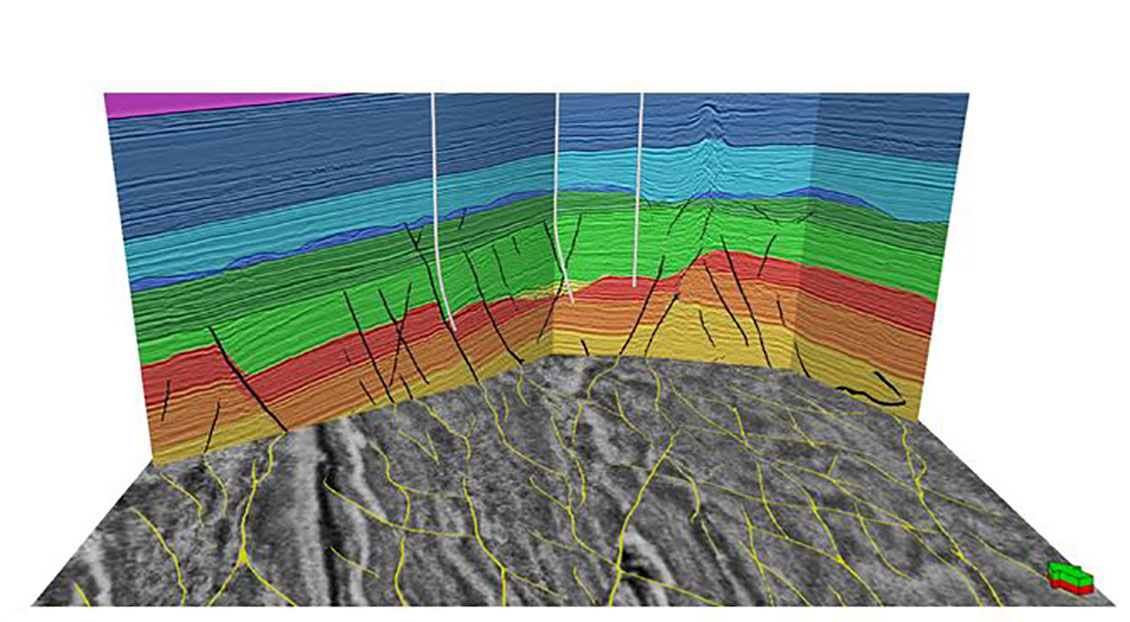
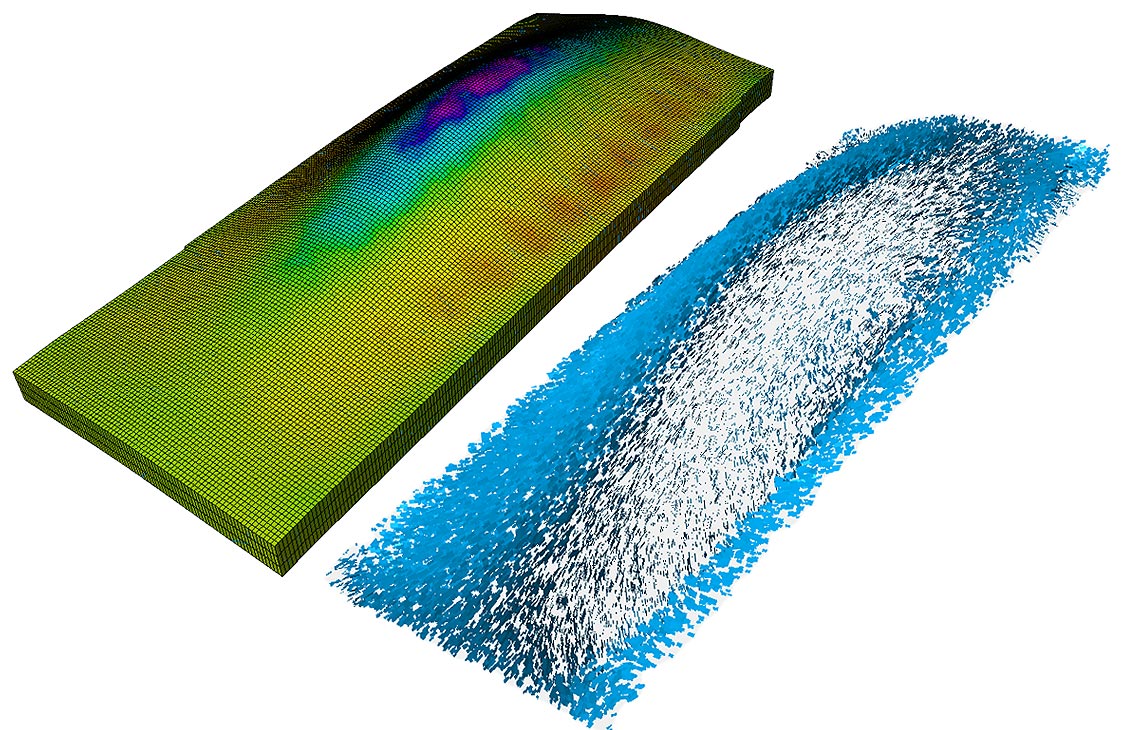
Predict fold related natural fracture distributions using the new Folding driver process
A new driver, called Folding driver, is now available to predict fold related natural fracture distributions. The results from this calculation are used to generate fracture characteristics, storing them into an existing grid as properties which can be consumed directly in the fracture network process. Complementing the Fault natural fracture prediction (NFP) workflow, this new driver brings a new geomechanical and geological approach to natural fracture distribution.
Improvements to structural modeling workflows increase workflow efficiency and accuracy
Segment filters on depogrids are now created based on the regions fault block data for that grid. The copy global grid operation for depogrids is also now available. A part of a depogrid can be extracted using either the segment filter, zone filter, cell index limits, or a closed polygon. The new grid contains the associated reduced list of faults, horizons, and zones, together with the grid and fault properties.
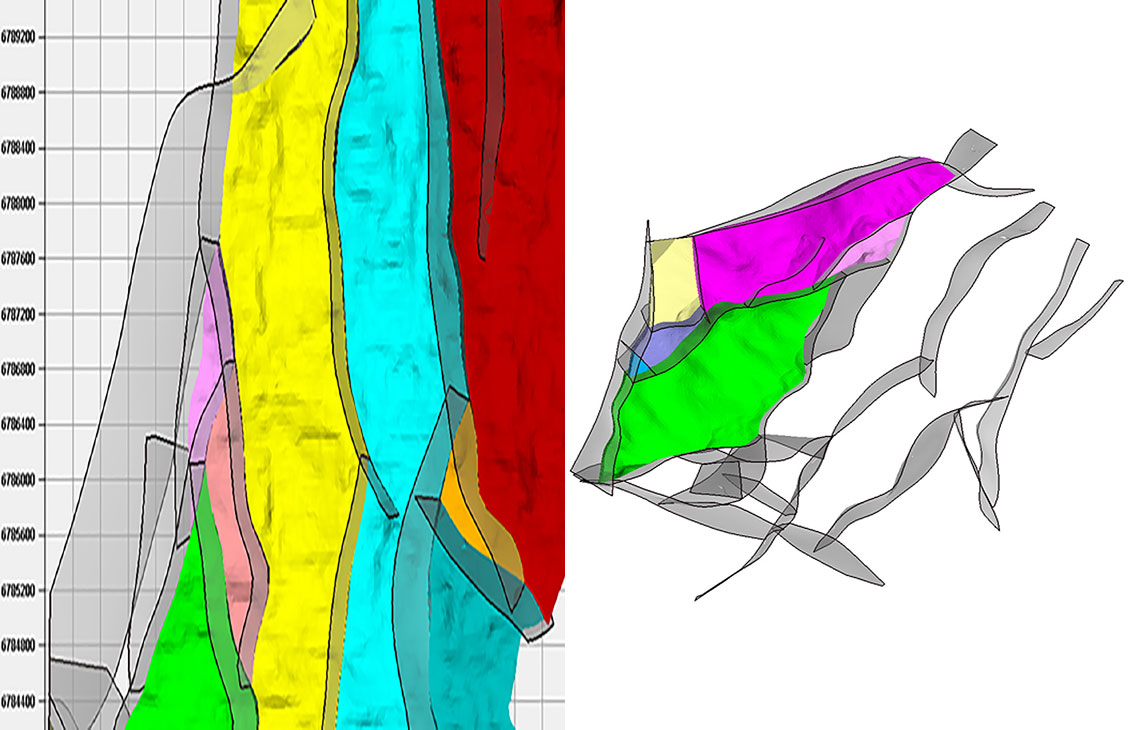
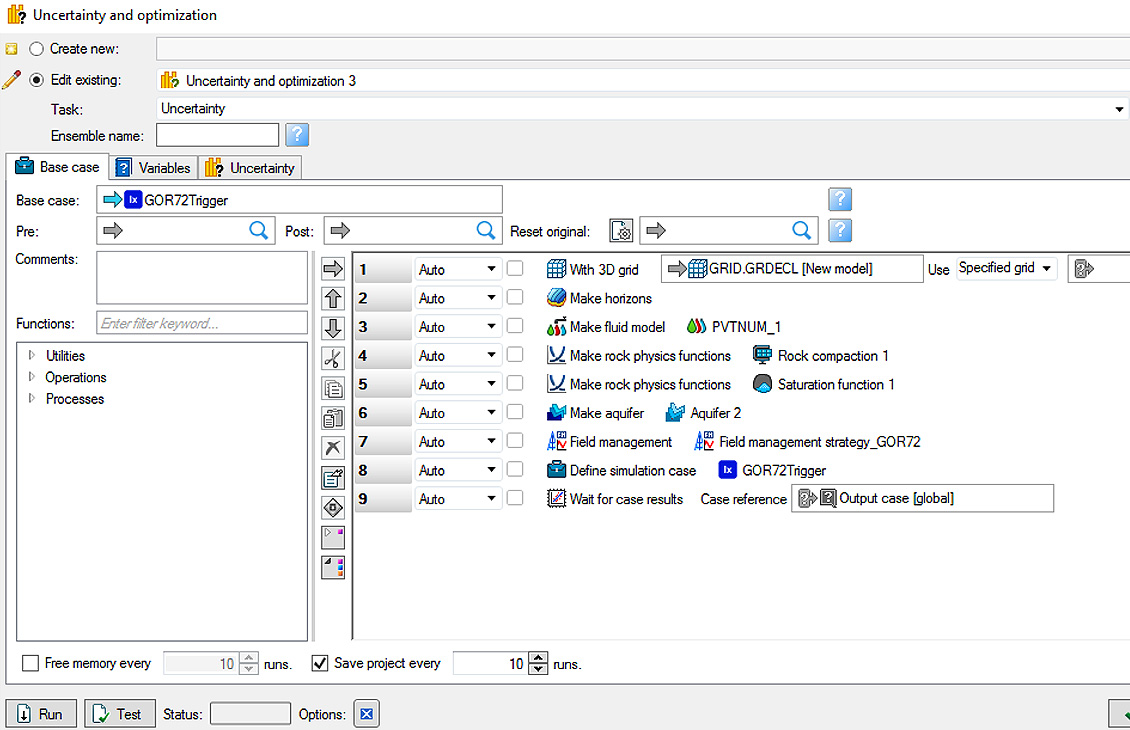
Improved user interface for Uncertainty and Optimization workflows
The Base case tab of the Uncertainty and optimization dialog box now has the same look and feel as the Workflow editor. The update includes a new comments field and the ability to search for utilities, operations, and processes that you can insert into the workflow improving efficiency.
Estimate CO2 capacity in saline aquifers using a guided workflow
The Carbon storage model builder provides a step-by-step guided workflow for the setup of a simulation model to estimate CO2 capacity in saline aquifers. In this guided workflow, you can model the complex physical and chemical behavior of CO2 in a few user-friendly guided steps.
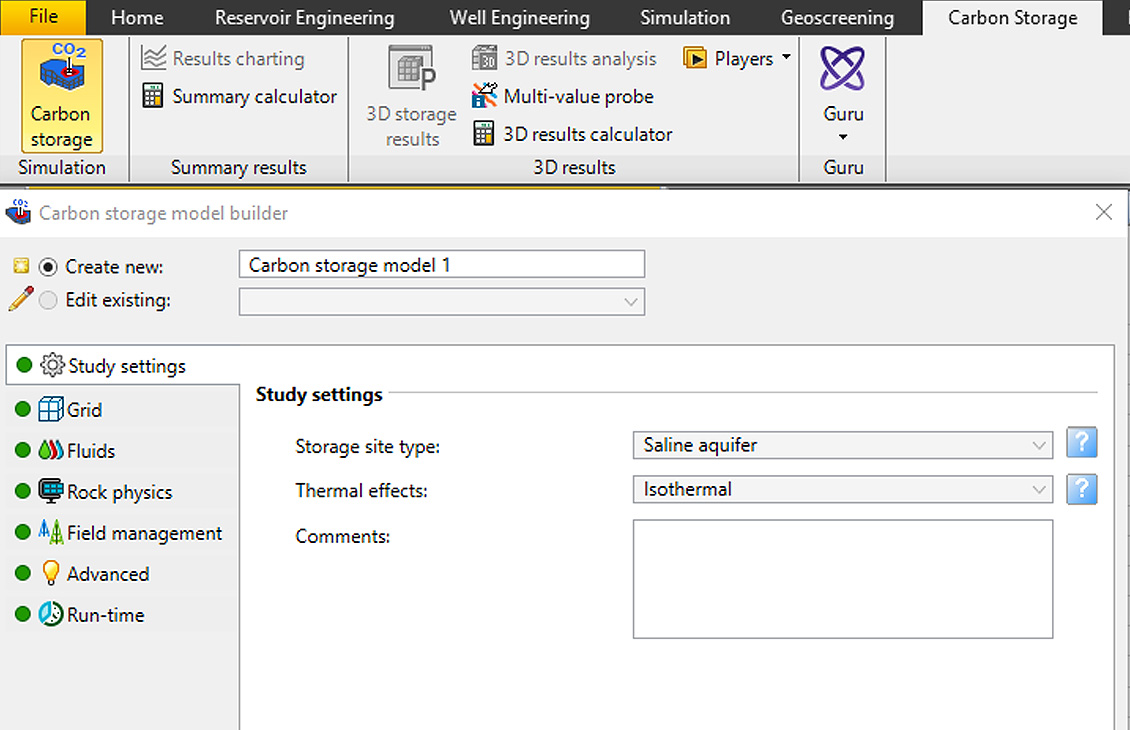
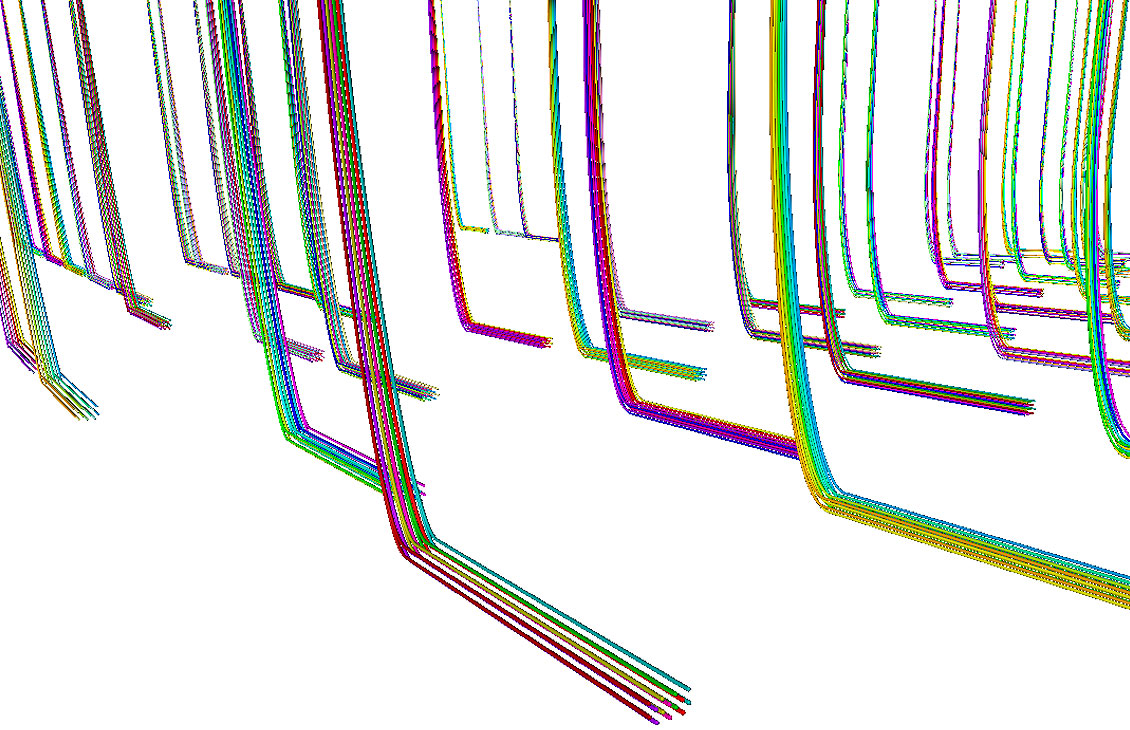
Insert multiple depth surfaces in one go, representing your target reservoirs for pad well design
In the Pad well design process, you can now insert multiple depth surfaces representing your target reservoirs to plan wells for multiple benches in a single sitting and organize the output plans into separate reservoir target folders.
Petrel 2024.1 Features
Quantitative Interpretation
Predict elastic and petrophysical properties from seismic angle stacks using a new quantitative interpretation (QI) machine learning tool!
A new tool has been added to the quantitative interpretation (QI) module. The QI machine learning reservoir characterization tool uses machine learning (ML) to predict elastic and petrophysical properties (porosity, volume of shale, etc) from seismic angle stacks.
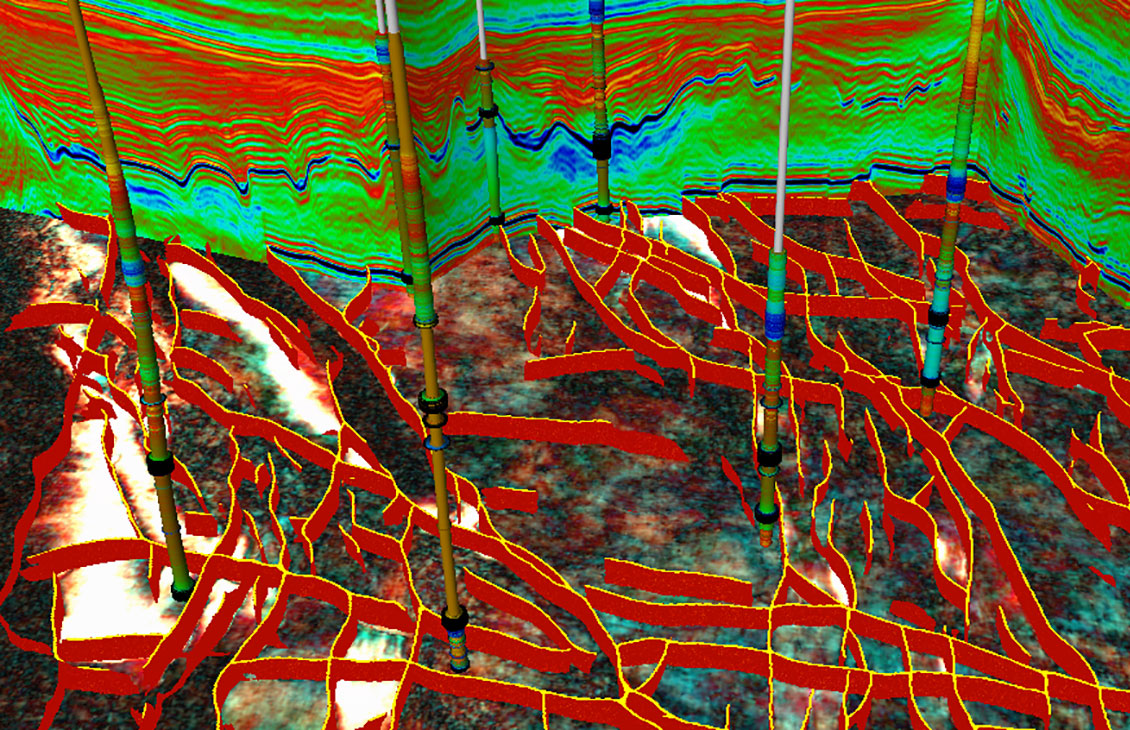
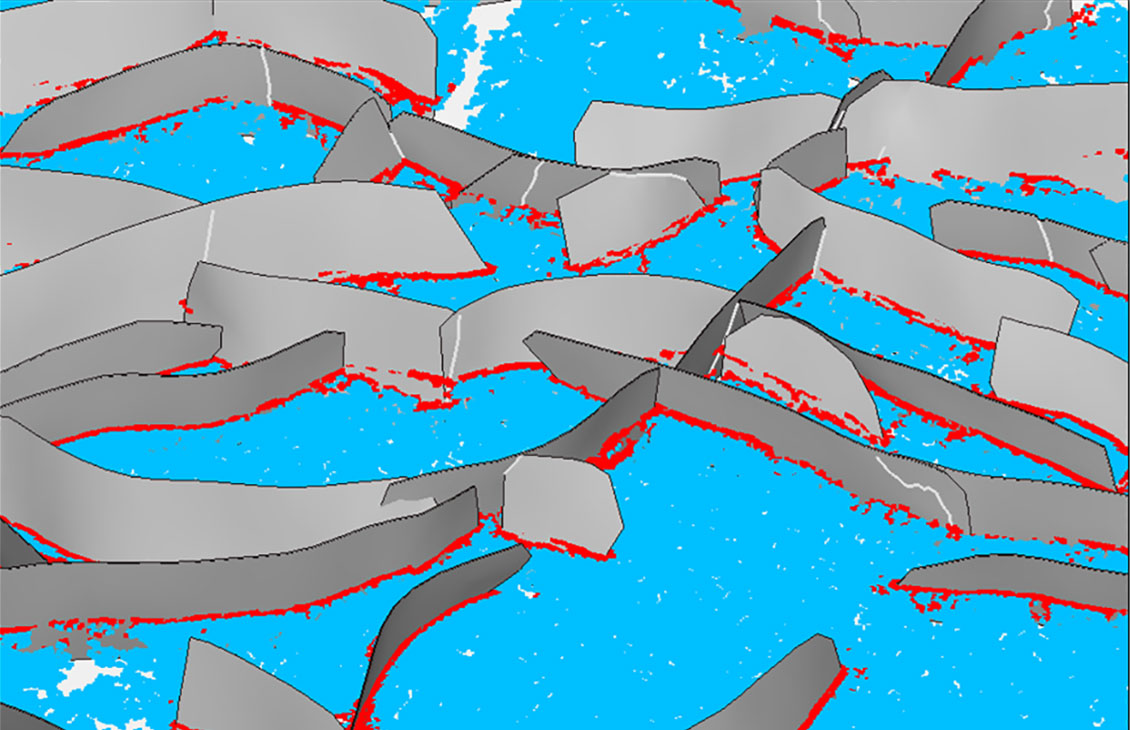
Horizon Clean-up
A new version of the horizon clean-up process is now available! Improve your structural models by removing poor-quality data.
This method automates the prediction of high and low-quality seismic horizon data in the areas near to faults, using a combination of distance and algorithm-based filters. The resulting filter attributes can be used to remove poor—and retain good quality—data, enhancing the model.
EDFM
Embedded discrete fracture modeling (EDFM) is now available for use in hydraulic induced fracture scenarios and large-scale systems in naturally fractured reservoirs!
EDFM is now available in Petrel software and the Intersect™ high-resolution reservoir simulator, to allow fractures to be represented as discrete objects during reservoir modeling and simulation. The integrated embedded discrete fracture modeling to simulation workflow is supported in the Intersect simulator from 2024.1.
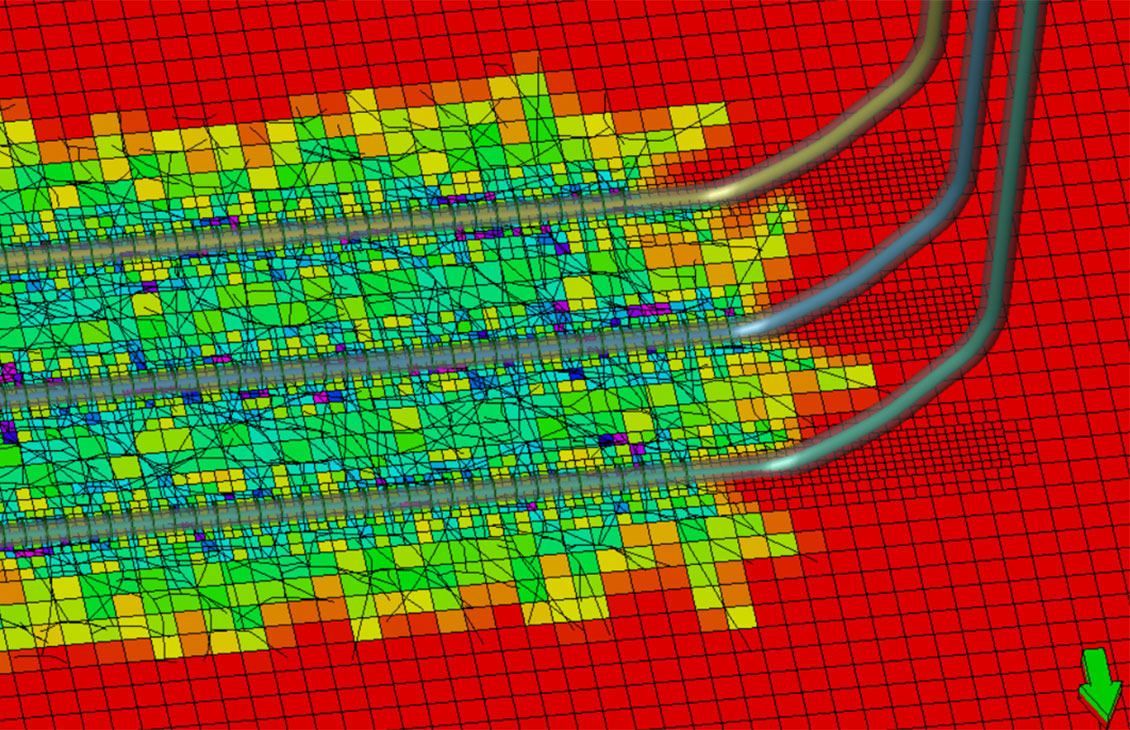
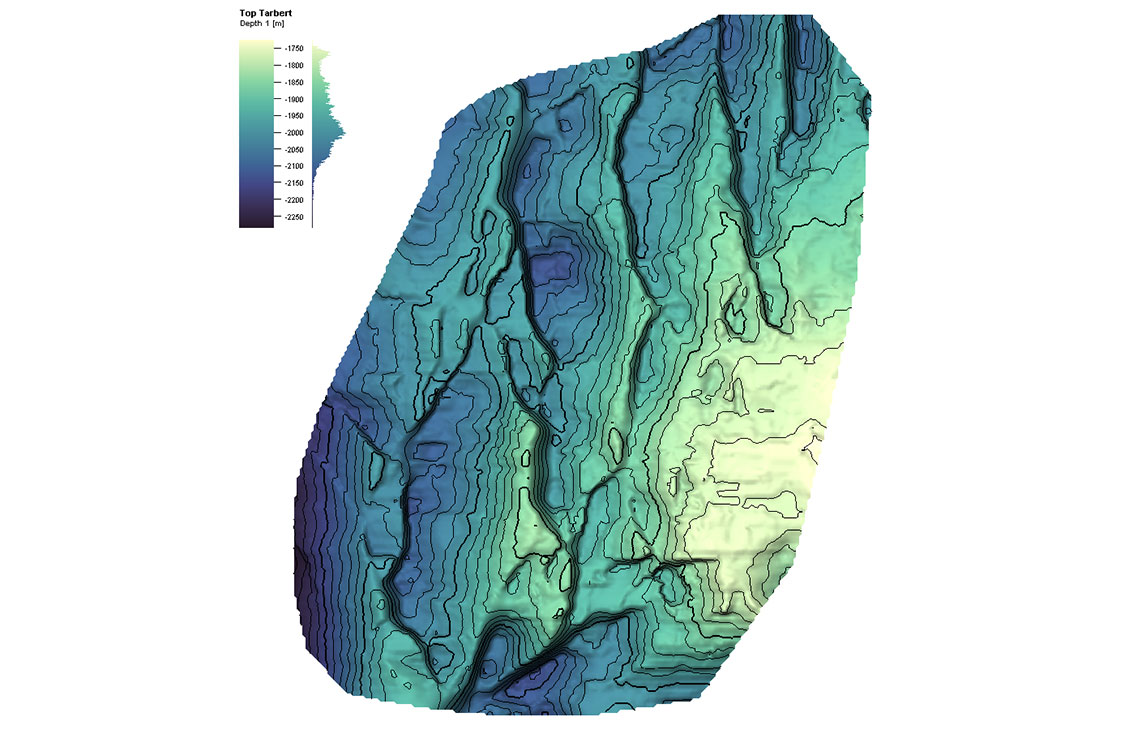
Perceptual color
Perceptual color tables now available in Petrel subsurface software for improved visualization!
Perceptual interpolation occurs in a color space known as Oklab. The Oklab color space is a perceptually uniform color model that accurately represents how humans perceive color. It ensures a visually consistent and balanced transition, taking into account factors such as lightness, chroma, and hue.
Petrel 2023.8 Features
Petrel 2023.8 and Studio 2023.8 release announcement
Petrel 2023.8 is mainly a quality and stability improvement release where we have focused on ensuring the platform is robust and easy to use. In this release, new functionalities have also been added based on popular feature requests. Please read the release notes to find the full list of improvements and fixes delivered.
Summary of Studio™ E&P knowledge software updates:
- To improve the user experience when working with projects with a high number of wells, the tree in the Refine well selection dialog box in Petrel is collapsed by default.
- User can now select multiple database and repository refresh tasks by using the Select all check box in the table header in the Database Refresh app.
Foundation
The auto legends for 2D and 3D windows showed two decimal positions by default. Now unnecessary decimal positions will not be shown, creating a cleaner display without having to change the template settings.
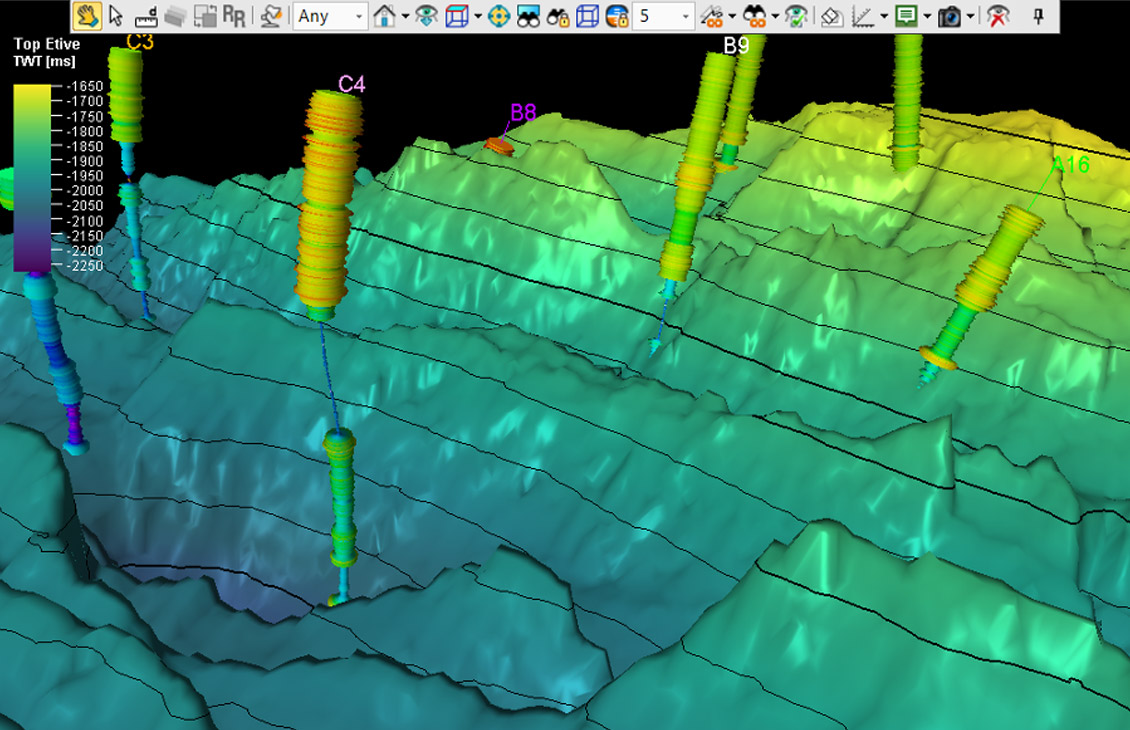
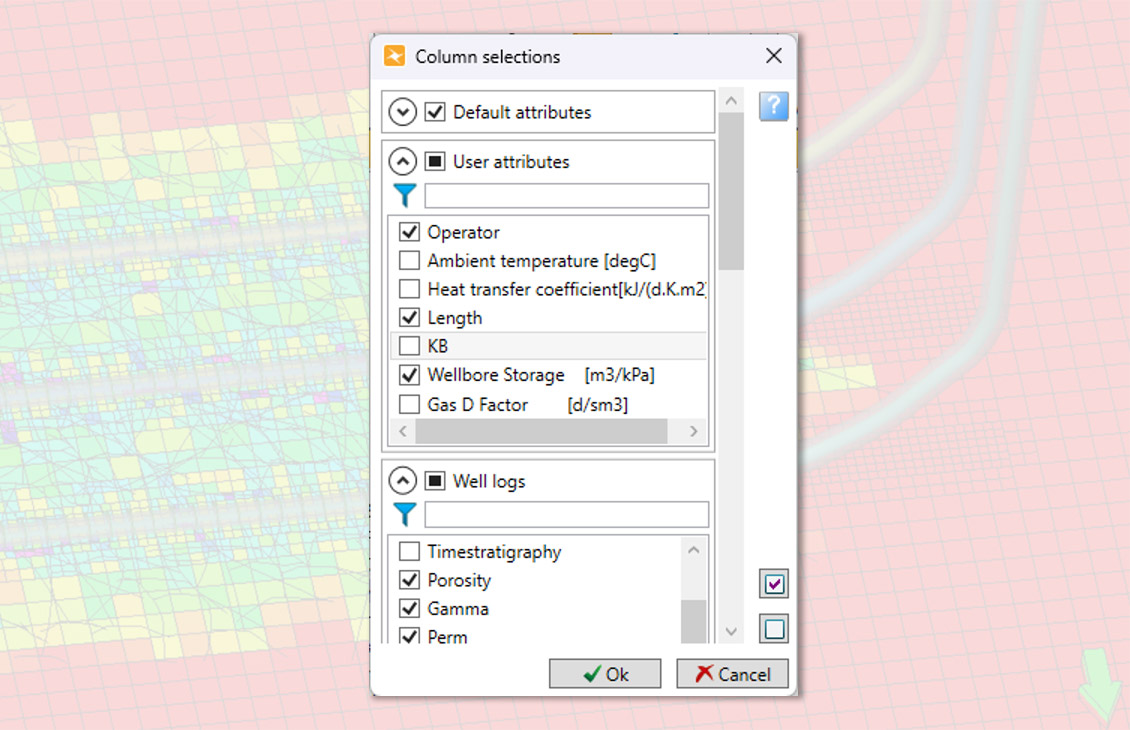
Geological Interpretation
Users can now remove empty wells under a Well tops folder by right-clicking on the Well filter icon and selecting Remove empty wells. This will reduce the number of clicks while helping to keep Petrel projects clean and manageable.
Under the Well manager, a new Column selector is now available, which allows users to quickly jump to the information they need about their project in a simple and intuitive interface, giving users more control over their data.
After creating a Well plan, users can now quickly convert that plan into a survey with a simple right-click. After selecting Create a survey, the plan will then be converted to a survey housed under the well’s Surveys and plans folder.
A new import buffer has been introduced to capture geotechnical and geoenvironmental (.ags) files in the wind energy sector for use in Petrel, eliminating the need for cumbersome workarounds for these new energy projects.
Improved behavior of the Keep wells in zones algorithm in the Make/edit surface process.
In the raster digitization process, users can now edit a previously saved digitized raster log, allowing for quick, on-the-fly editing of digitized curves.
Geophysical Interpretation
New features in this area include:
- Fast connect to local files for 3D seismic (ZGY). New function of reconnecting seismic on local disks. This function retains the GUID, allowing users) to clean their .ptd folder from internal seismic cubes
- Increased realization performance for large seismic volumes
- Enhancement of the Workflow Editor module for the volume attribute i.e. Frequency Filter. Now users can add variables in the Frequency Filter
- Automated machine learning (AutoML) presets the selection and parametrization of machine learning models for Quantitative Interpretation (QI)
- ML. AutoML iterates over different data transformations, machine learning algorithms, and hyperparameters to select and apply the best model.
- The AutoML tab has been added to the QI Machine Learning Training dialog box
Structural and Reservoir Modeling
The structural framework tools that were available on right-mouse-button click in previous versions are now available in the new dedicated Structural framework tool palette. This allows a user to easily access these operations via the Structural framework palette and remain available as long as the palette is open.
A new functionality has been added to facilitate the construction of fault frameworks. Now with a right-click on an interpreted fault (fault sticks or points), users have an option to add this item to the existing and active fault framework without the need to open the fault framework process. This is available in the 3D window and from the Input tree.
When combining both tools, users can interactively update their fault model directly in the 3D window and visualize the results, without the need to open the Fault Framework process. This results in an accelerated fault modeling process for both model creation and continuous model updates.
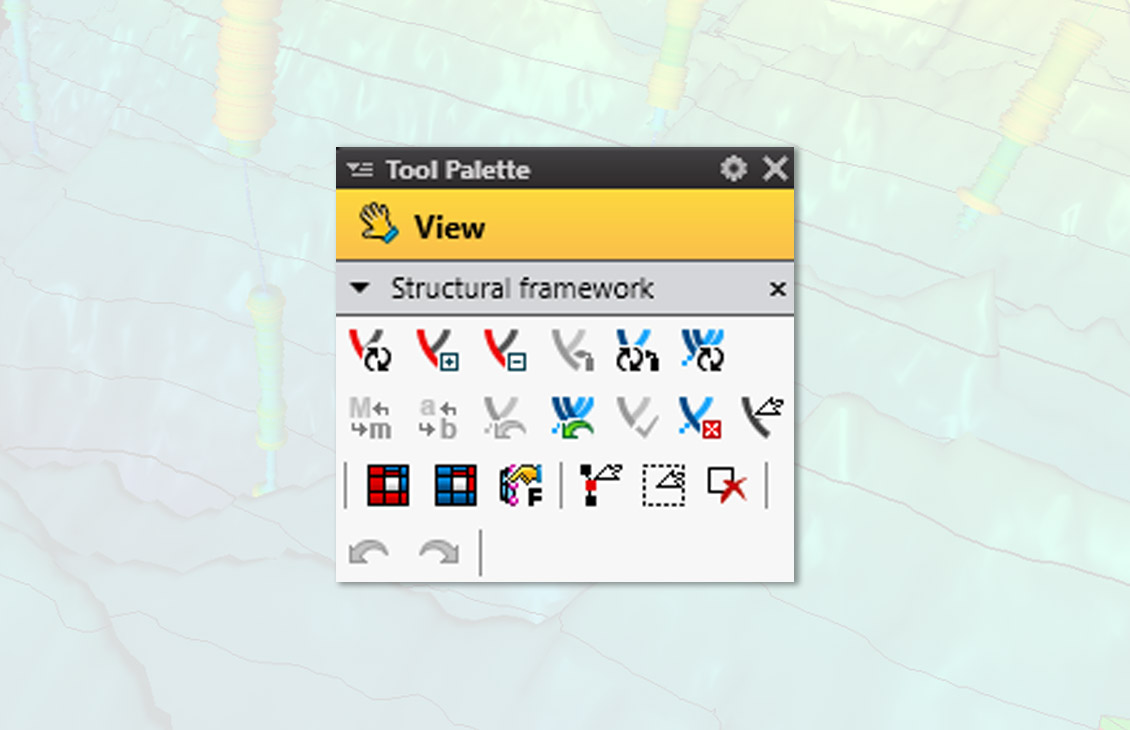
Petrel 2023 Features
Machine learning (ML) and inversion in Petrel Quantitative Interpretation
The Petrel Rock Physics and Inversion plug-in provides a set of robust, interactive tools to explore the relationship between seismic amplitudes and reservoir properties in 3D and 4D. Leading-edge seismic AVO inversion techniques allow solving jointly for lithofacies and elastic properties. With petrophysical joint inversion, multiphysics measurement can be integrated for a better estimation of reservoir properties.
This functionality is now included as part of Petrel Quantitative Interpretation.
Machine Learning based prediction of log and reservoir properties has also been added to Petrel Quantitative Interpretation. Allowing users, a faster turn around time for reservoir characterization workflows or integrated reservoir characterization for accelerated and more informed decisions.
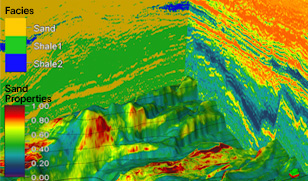
Petrel 2021 Features
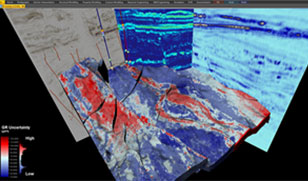
Machine learning for property modeling
Machine learning for property modeling combines tried-and-tested geostatistical methods with machine learning to change the paradigm of reservoir property modeling. This new process dramatically reduces the time spent on geostatistical data analysis and parameterization tasks. These time savings enable you to spend more time analyzing output property model realizations, and their associated uncertainties, to rapidly deliver reservoir models with increased efficiency and confidence to make better decisions.
Traditional geostatistical reservoir modeling is complex and time consuming. Detailed knowledge of geostatistics is generally required and the de-trending of input data, alongside stationarity assumptions, needs to be done per zone, per facies and per region. These extensive data preparation tasks are not needed in Machine Learning for Property Modeling as the geostatistical models are embedded into machine learning.
This has several beneficial implications; firstly, an unlimited number of variables can now be used to provide additional conditioning of the model. Secondly, the time normally spent on detailed parameterization can instead be spent on better understanding the geological relationships between the input and output data and gaining a more comprehensive understand of the subsurface.
Traditional property modeling efforts produce a distribution of the target property with additional effort required to gain an understanding of property uncertainty. Machine learning for property modeling produces an integrated, consistent estimation of the property distribution at every cell. This allows geomodelers to obtain robust and unbiased estimates of the property, the associated uncertainty and sweet spots. These additional outputs enable you to quickly gain a better understanding of where reservoir-grade conditions are likely to be present, and where more detailed analysis is required.
Generate Visage ensembles from Petrel
In Petrel 2021.1. you can generate ensembles of Visage finite-element geomechanics simulations from within Petrel uncertainty and optimization (U&O) process. Apply variables and vary properties to obtain a quantitative assessment of geomechanical uncertainty.
New post-processing tools in Petrel 2021.1 enable easily visualization and interpretation the output ensembles, so geoscientists can derive insights. Compatibility with the charting window enables geoscientists to present geomechanics summary findings for a selected region, individual simulations, or numerous examples in an ensemble.
The mean and standard deviation for various simulation results can be calculated and visualized in 3D using a new stress calculator tool (see picture above). The calculation enables geoscientists to determine the geomechanical uncertainty at any point in the modeled subsurface, providing a better understanding of subsurface stress and strain to enable better well placement and field development decisions
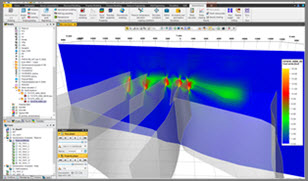
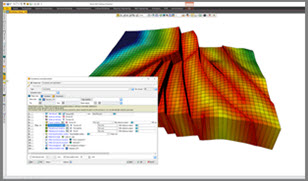
Faster depogrid simulation exports
When exporting depogrid cases for simulation, Petrel 2021.1 optimizes the data footprint and runtime. For example, the export time for a 2.26 million cell depogrid, with a 25 realization Uncertainty and Optimization (U&O) workflow where properties are modified, reduces from 17 minutes (14.7 GB data) to 4 minutes (0.8 GB data).
Data will only be exported from depogrid case files if there has been a relevant change since the last export. This optimization of the data footprint means that re-export time will be substantially reduced. A further reduction in the data footprint and export runtime is achieved by sharing common grid files, case data, and properties across U&O cases.
The combined optimization of the export data footprint offers a significant reduction in export runtime–a 75% reduction for a 2.26 million cell depogrid with a 25 realization U&O workflow where properties are modified–by eliminating the need to re-export unchanged and common data. Runtime savings will vary depending on the size and complexity of the model.
Identify critically stressed faults
Identifying severely stressed faults in the subsurface is an important component of defining future field development plans, especially for EOR, carbon capture and storage, and geothermal workflows. The new distance-to-failure algorithm, which uses Mohr-Coulomb failure criteria, enables geoscientists to make an initial assessment of the fault model to identify areas of faults that are oriented favorably for slip and therefore more likely to conduct fluids up the fault.
Distance-to-failure analysis is used to determine the likelihood of sliding on individual faces of the fault surface. Fault faces that are oriented favorably for slip are considered to be critically stressed and are more likely to conduct fluids up the fault. A detailed understanding of which faults are likely to be leakage pathways is critical not only for oil and gas operations, but also for long term CO2 storage integrity and geothermal operations.
The new distance-to-failure operation in Petrel 2021.1 employs Mohr-Coulomb failure criteria and enables geoscientists to perform an initial assessment of the fault model so they can identify potential areas that may require further investigation.
The distance-to-failure operation, which is available for structural frameworks, depogrids, pillar grids, discrete fractures, and points sets, is located in the Structural analysis tab of each object's Settings dialog.
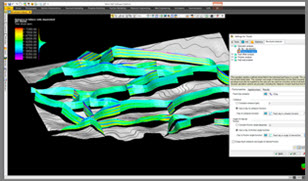
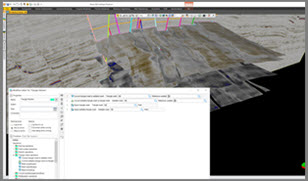
Automate over 90% of work steps in Petrel
The workflow editor is one of the most powerful tools available in Petrel subsurface software. Use it to automate work steps from everyday housekeeping to assessing reservoir uncertainty and share them across your organization using the new export/import functionality.
By automating laborious and time-consuming procedures in the workflow editor, you can focus on analysis and delivering value.
The Petrel 2021's workflow editor now supports:
- Conversion of triangular meshes to editable triangle meshes (and vice versa)
- Deletion of fracture sets
- New work steps to create and edit point and polygon attributes enable geoscientists to create and edit string attributes and manipulate attribute spreadsheets
- Conversion of structural framework model horizons to surfaces
- Generation of Visage finite-element geomechanics simulator ensembles
Easily manage Petrel performance
The new Petrel subsurface software health monitor tool helps users monitor and manage the performance of Petrel, and provides hints and tips to better manage performance so you can work uninterrupted.
The Petrel health monitor interface displays real-time memory consumption, dedicated Graphic Processing Unit (GPU), User, and Graphics Device Interface (GDI) handles, as well as traffic light indicators that indicate when system resources are being over-stretched. Hover over hints and tips to enable you to proactively manage performance and assist in preventing performance issues.
The new Petrel health monitor can be accessed in the Home tab on the ribbon, or via the GDI, User, RAM and GPU indicators in the bottom right of the Petrel subsurface software interface.
